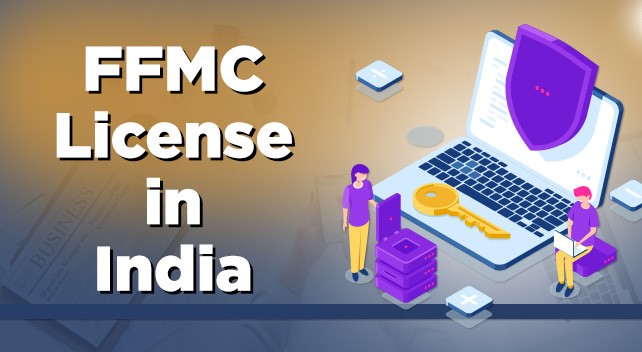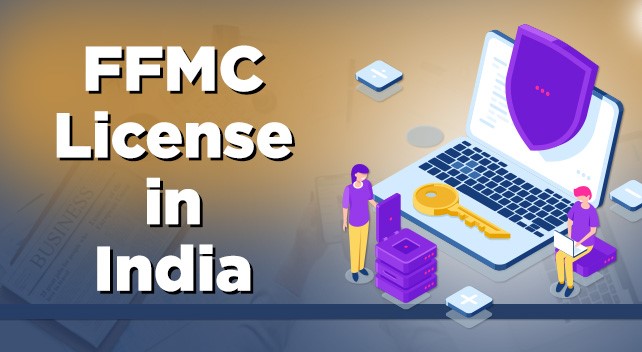
What do NBFCs stand for?
NBFCs, or Non-Banking Financial Companies, are pivotal to India’s financial landscape, offering a broad spectrum of financial services and products to both individuals and businesses. In recent years, the rules for non-banking financial companies (NBFCs) have changed a lot. The focus now is on making things clearer, ensuring financial stability, and safeguarding consumers’ interests.
Obtaining NBFC registration online in India is mandatory for entities seeking to engage in financial activities such as lending, investment, or asset financing, without meeting the criteria of a traditional bank. The NBFC registration online process has been streamlined to facilitate online applications, enabling prospective companies to navigate regulatory requirements more efficiently.
Expert consultants in online NBFC registration in India provide valuable guidance to steer through the detailed process of securing an NBFC license online from the RBI. They assist in preparing necessary documentation, ensuring adherence to regulatory norms, and guiding applicants through the evaluation process overseen by the RBI. This support ensures that aspiring NBFCs meet all requirements for regulatory approval while positioning themselves effectively within India’s financial sector.
Get NBFC registration with RBI in India
Here are the steps to follow in the NBFC registration online process to get the NBFC license online.
- Incorporate a Private Limited or Public Company:
- The company’s proposed name must include keywords like Finance, FinServ, Fin, Investment, Capital, Fintech, Leasing, etc.
- Ensure Minimum Net Owned Fund (NOF):
- The applicant company is required to maintain a minimum Net Owned Fund (NOF) of Rs. 2 crore.
- Deposit the NOF in a bank account opened in the company’s name.
- File Online Application with RBI:
- Submit an online application on the RBI’s official website.
- Submit Required Documents:
- Filled application form
- Certified copies of the Certificate of Incorporation (COI), Memorandum of Association (MOA), and Articles of Association (AOA) must be provided.
- Latest audited annual accounts and statutory auditor certificate
- Certificate of Net Worth for Directors, Shareholders, and the Company
- Educational qualifications and experience certificates of proposed directors
- Business profile of directors and shareholders, including Credit Report (CIBIL)
- KYC details, PAN of the company, and address proof
- Bank account details showing the deposited NOF
- Audited balance sheet for the last 3 years or since incorporation
- Income Tax Returns
- Bank Statement Confirming No Liens on Fixed Deposits
- Board resolution format for NBFC registration
- Business structure and a 5-year business plan
- Receive Reference Number:
- Upon submission, receive a reference number for future inquiries.
- Submit Physical Copies to the RBI Regional Office:
- Submit hard copies of the application to the designated RBI regional office.
- Document Verification by Regional Office:
- The RBI regional office verifies the accuracy of submitted documents.
- Central Office Approval:
- The regional office forwards the application to the central office of RBI for final approval.
- Grant of NBFC Registration:
- RBI grants NBFC registration online if all requirements under Section 45-IA are fulfilled.
- Clarifications and Further Information:
- RBI may request clarifications or additional information as needed.
What are the types of NBFCs?
1. Investment Companies:
- Activities: These NBFCs mainly focus on investing in financial assets like stocks, bonds, and securities.
- Regulation: Regulated by RBI, they adhere to investment guidelines, asset quality norms, and risk management practices.
- Examples: Motilal Oswal Financial Services, Edelweiss Financial Services, JM Financial Limited.
2. Asset Finance Companies:
- Activities: Provide financing for acquiring physical assets like machinery, equipment, vehicles, etc.
- Regulation: Regulated by RBI standards concerning asset quality evaluation, borrower repayment ability, and asset categorization requirements.
- Examples: Sundaram Finance, Magma Fincorp, HDFC Asset Management Company.
3. Loan Companies:
- Activities: Focus on providing loans and credit facilities to individuals and businesses.
- Regulation: Must comply with RBI regulations regarding interest rates, loan terms, recovery practices, and provisioning for non-performing loans (NPLs).
- Examples: HDFC Ltd., ICICI Home Finance, and Kotak Mahindra Prime Ltd.
4. Deposit-taking NBFCs:
- Liabilities: Accept deposits from the public, similar to banks.
- Regulation: Under the Banking Regulation Act, of 1949, as enforced by the RBI, with strict requirements for capital adequacy, liquidity, and customer protection.
- Examples: Bajaj Finance Limited, Mahindra Finance, Shriram Transport Finance Company.
5. Non-deposit-taking NBFCs:
- Liabilities: Do not accept public deposits but raise funds through other means like debentures, bonds, and loans.
- Regulation: Subject to RBI regulations ensuring capital adequacy and prudential norms to maintain financial stability.
- Examples: L&T Finance Holdings, Tata Capital, Muthoot Finance, Cholamandalam Investment and Finance Company Limited.
6. Infrastructure Finance Companies:
- Liabilities: Specialize in long-term finance for infrastructure projects, funded through bonds, debentures, and loans.
- Regulation: Governed by specialized RBI regulations promoting infrastructure development and managing long-term financing risks.
- Examples: IDFC First Bank, Power Finance Corporation, REC Limited.
Significance of Compliance for NBFCs
- Financial Stability: NBFCs, although not banks, engage in lending and investing activities similar to banks. Compliance with regulations is crucial to mitigate risks such as liquidity shortages, credit defaults, and overall financial instability.
- Investor Protection: NBFCs raise funds from the public and institutional investors. Regulatory compliance ensures transparency, proper disclosure of financial health, and protection of investor interests, including adherence to capital adequacy and risk management norms.
- Consumer Protection: Numerous NBFCs cater to retail and small business clients. Adhering to regulations guarantees fair practices, transparent loan terms, and protection against exploitative practices or unjust debt recovery methods.
- Market Discipline: Regulatory requirements enforce standards of conduct and financial prudence among NBFCs. This promotes responsible lending practices, accurate risk assessment, and provisions for potential losses.
- Systemic Risk Management: NBFC failures can impact the broader financial system due to their interconnectedness with banks. Compliance measures help identify and mitigate systemic risks, enhancing overall financial stability.
- Regulatory Objectives: Regulators like the Reserve Bank of India (RBI) enforce compliance to achieve goals such as promoting financial inclusion, supporting economic growth, and ensuring fair competition in the financial sector.
Conclusion
Obtaining an NBFC license in India is a crucial step for any entity looking to participate in financial activities like lending, investment, or asset financing. The process for NBFC registration online in India has been streamlined to make it easier for businesses to navigate, thanks to advancements in online NBFC registration systems.
Engaging with an NBFC registration consultant in India can provide valuable assistance, ensuring that all regulatory requirements are met efficiently. By following the outlined steps, including submitting the necessary documents and adhering to RBI guidelines, you can successfully get NBFC registration with RBI in India.
For businesses aiming to secure their NBFC license online, it’s important to focus on compliance and documentation to facilitate a smooth registration process. With the right guidance and preparation, obtaining your NBFC registration online can significantly enhance your position in India’s financial sector.









